Metropoliassa kulttuurihyvinvointialan ylemmän ammattikorkeakoulututkinnon voi opiskella englanninkielisessä Creativity and Arts in Social and Health Fields (CRASH) -koulutuksessa. Opiskelijoista muodostuva kehittäjäyhteisö uudistaa luovuuden, kulttuurin ja taiteen hyödyntämistä sosiaali- ja terveysaloilla. YAMK-tutkinnossa yhdistetään uusinta tutkimusta työelämän käytännönläheiseen kehittämiseen. Opiskelemaan voivat hakea niin sosiaali- ja terveysalan kuin kulttuurialankin ammattilaiset.
Keväällä 2023 CRASH-opiskelijat tekivät opintomatkan Malmöseen ja Kööpenhaminaan. Tutustu opintoihin opiskelijoiden Maj Ilolan ja Jonna Kultasen kirjoittaman matkablogin avulla.
CRASH study trip to Malmö and Copenhagen – visiting organisations doing outreach work
Written by Maj Ilola and Jonna Kultanen
Students in Creativity and Arts in Social and Health fields (CRASH) Master´s degree programme
Metropolia’s Creativity and Arts in Social and Health fields (CRASH) Master’s degree students visited Malmö and Copenhagen on the 11th to the 13th of May 2023. The study trip consisted of workshops and visits to different organisations and institutions doing outreach work.
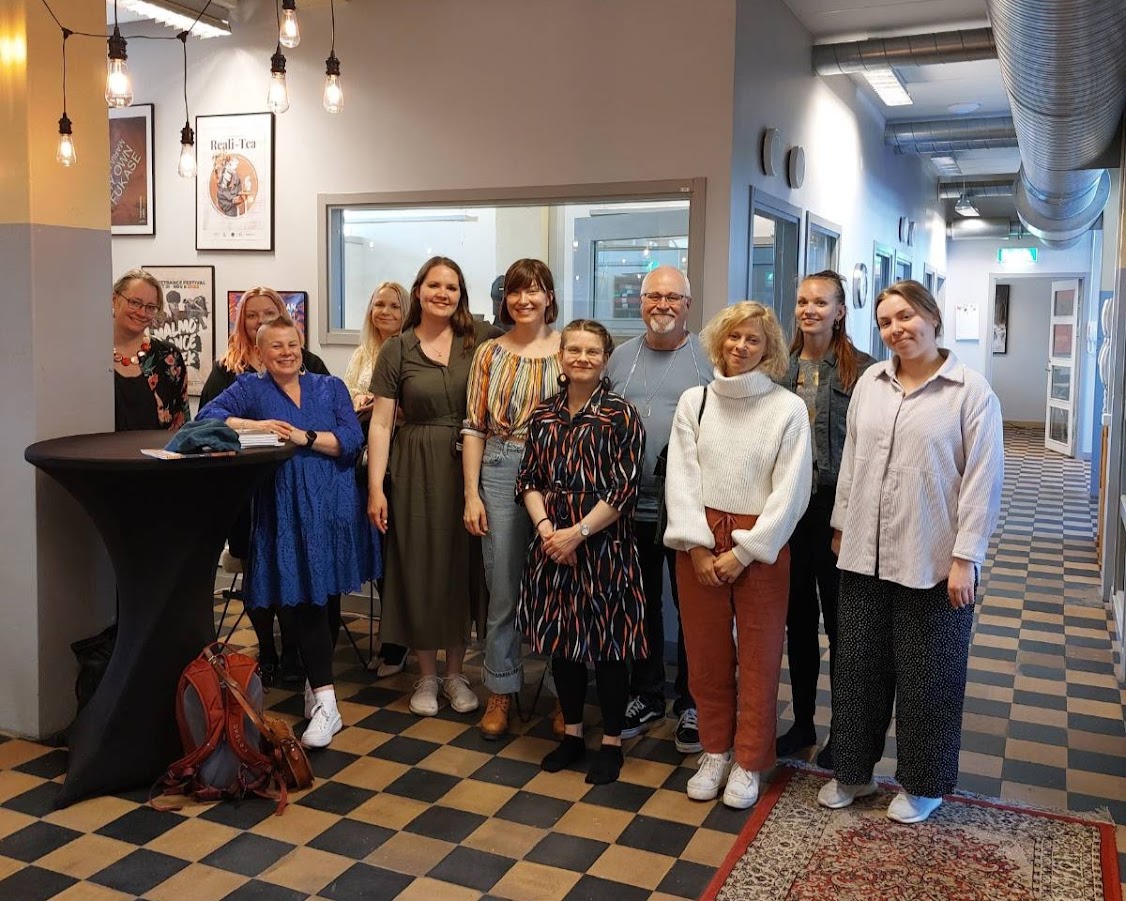
The CRASH programme at Metropolia is a fairly new one and not yet so well known. We have gotten many questions about it from students and staff at Metropolia and elsewhere, so let’s open it up a little bit. It is a Master’s programme of 1,5 years that started in 2021 and has now welcomed two groups of students. Approximately half of the students are professionals from the social and health fields and the other half are working in the arts and culture field. The curriculum consists of different collaborative and multidisciplinary courses and the aim is to educate professionals that can use creativity and arts in promoting health and wellbeing.
This article is written by two CRASH 2022 students, Maj Ilola, a Bachelor of Culture and Arts working as a cultural manager and Jonna Kultanen, a Bachelor of Oral Hygiene working as a dental hygienist. Our aim was to bring you perspectives from our different fields of expertise – culture and health care.
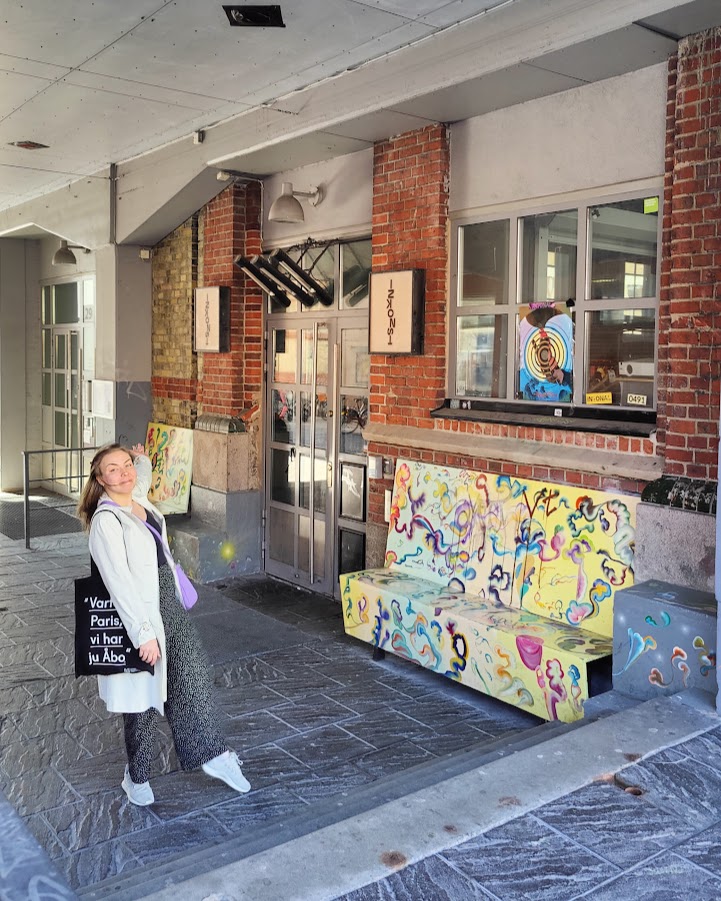
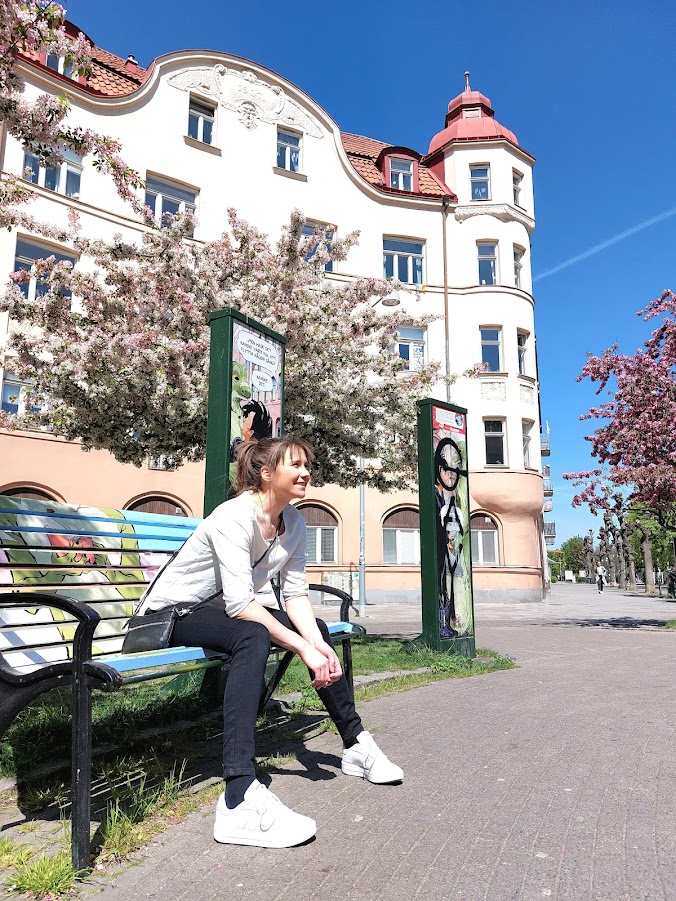
By: Kirsi Helle
Malmö is located on the coast of southern Sweden and is connected to Copenhagen by the Öresund bridge. Malmö is the third largest city in Sweden and approximately 350 000 people live there. Malmö has impressive architecture, history and culture. Copenhagen is the capital of Denmark and inhabits about 1.4 million people. Copenhagen was originally a Viking fishing village, but nowadays it is a lively city that attracts tourists from around the world to admire the historic royal buildings, the modern architecture and the rich culture.
The theme of the study trips and the study visits was outreach work. Outreach work is often connected with social workers, but in our case we were focusing on outreach work done by cultural institutions and organisations. The key component of outreach work is that the outreach group is functioning locally at the community or the place where the target group is situated. The aim is to reach a certain target group that would not otherwise take part in the creative, artistic or cultural activity. In this way the organisations and institutions are promoting themselves at the same time as they are reaching new potential audiences or target groups.
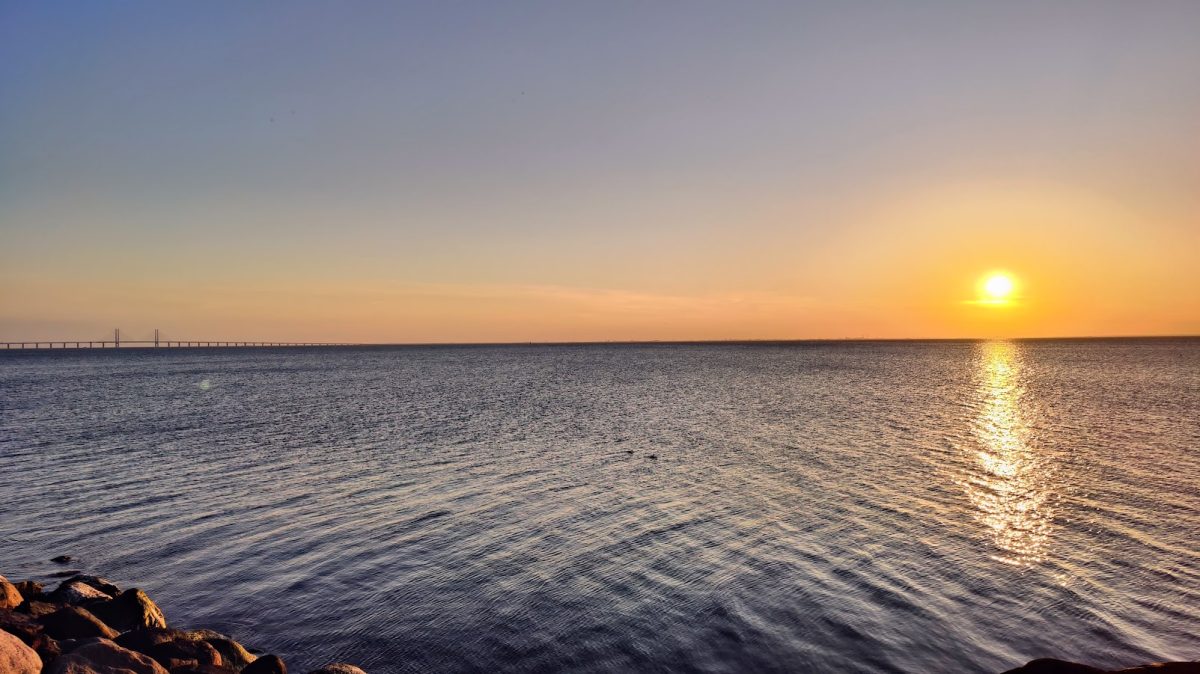
Day One – Music and Movement
The first day of the study trip started in a sunny and warm Malmö by visiting the Inter Arts Center (IAC) of Lund University. IAC is a part of the Faculty of Fine and Performing Arts at Lund University. IAC collaborates closely with Malmö Art Academy, Malmö Academy of Music and Malmö Theatre Academy. IAC is a platform for research and collaboration between artists and academics. IAC is located in Kulturhuset Mazetti, which is an old chocolate factory.
Our study visit consisted of a eurhythmics workshop utilising Émile Jaques-Dalcroze’s and Rudolf Laban’s practices guided by Adjunct Professor Elin Waileth Wikström. Émile Jaques-Dalcroze was a Swiss composer, musician, and music educator who developed Dalcroze eurhythmics, an approach to learning and experiencing music through movement. Rudolf Laban was an Austro-Hungarian dancer, choreographer and dance theoretician, who has also been called the father of European modern dance. The practices consisted of moving in different ways to music and created a deeper understanding of music and rhythm.
The rest of the day was spent enjoying the cultural Malmö and its most loved attractions like Folkets Park (The people’s park), the 190 metre tall apartmental skyscraper Turning Torso, and numerous second hand stores. Elin told us that Malmö is known as the city of comic strips and that many well known comic strips like Bamse were created in Malmö. This was also seen in the city in the form of the many comic stores and comic themed paintings in the streets.
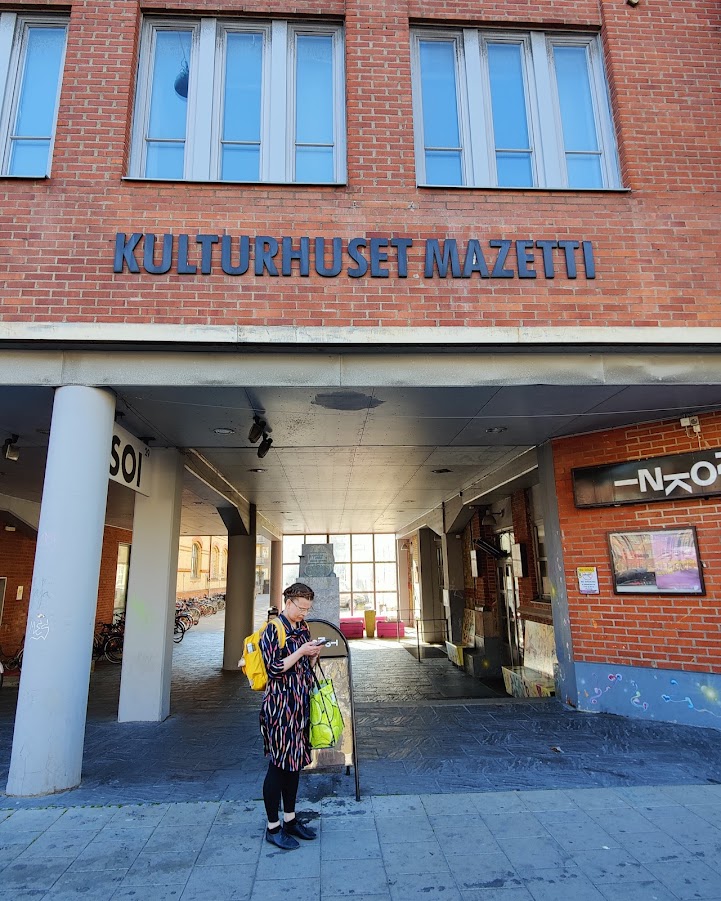
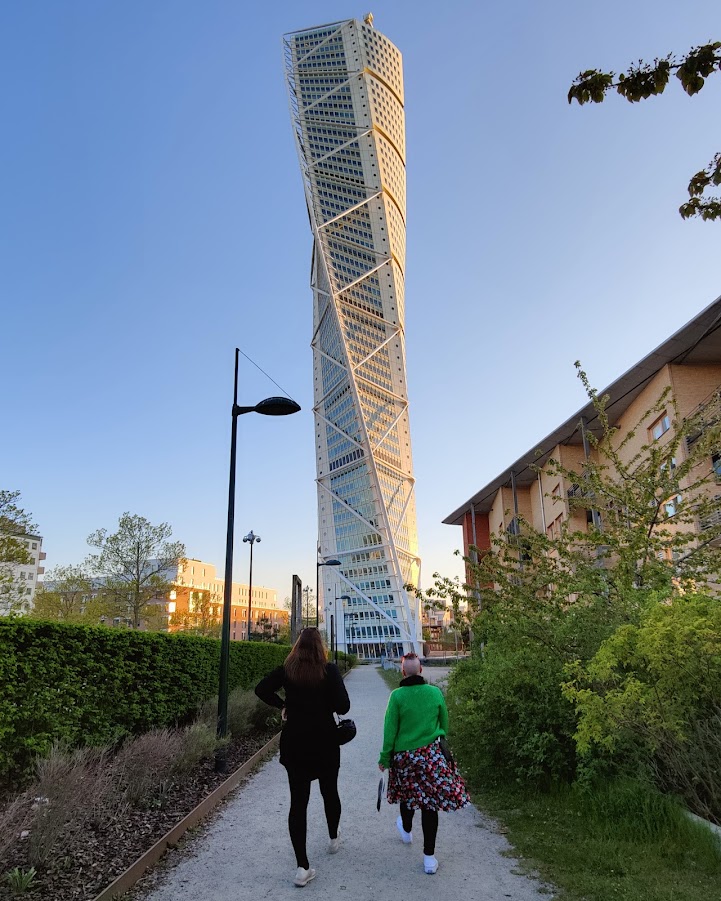
Task: How can we make use of the movement workshop in our working lives?
Maj: I work as an event producer, so I can bring together music and movement educators with different target groups that would benefit from the workshop. The methods learnt in the workshops can also be applied to my everyday life. For example we did an exercise about moving in different ways: straight or twisting and turning, light or powerfully, and fast or slow. I can move with different precision to enable different expressions outwards and inwards. For example, if I am feeling tired I can move faster and more powerfully to feel more energetic.
Jonna: At first I thought that movement and dental care would be hard to combine, but the workshop did bring out valuable insights that I could use in dental care. First of all, music is something many health care professionals use to set the mood. It is more often than not that the radio is on when entering a dental clinic. Sometimes the music is even designed for the purpose.
During the workshop we reflected a lot. I find reflecting highly important as we all will always have our personal experiences whatever the matter. As a dental hygienist I believe that guiding customers to reflect can result in a more meaningful learning experience and have a stronger impact on oral health habits that support better health.
As Elin was talking about the theory behind the workshop, she said “experience first, theory after”. For me this was sort of a relief to hear. For a sensitive and conscientious person, following theory can sometimes seem a bit hard. I feel that allowing ourselves to experience first, allows us all to experience more holistically.
Day Two – Performing Arts
On the second day of our study trip we visited three different cultural organisations and institutions. The day started with a visit to ShareMusic & Performing Arts. ShareMusic is a knowledge centre that works for everyone’s right to practise cultural and artistic activities.
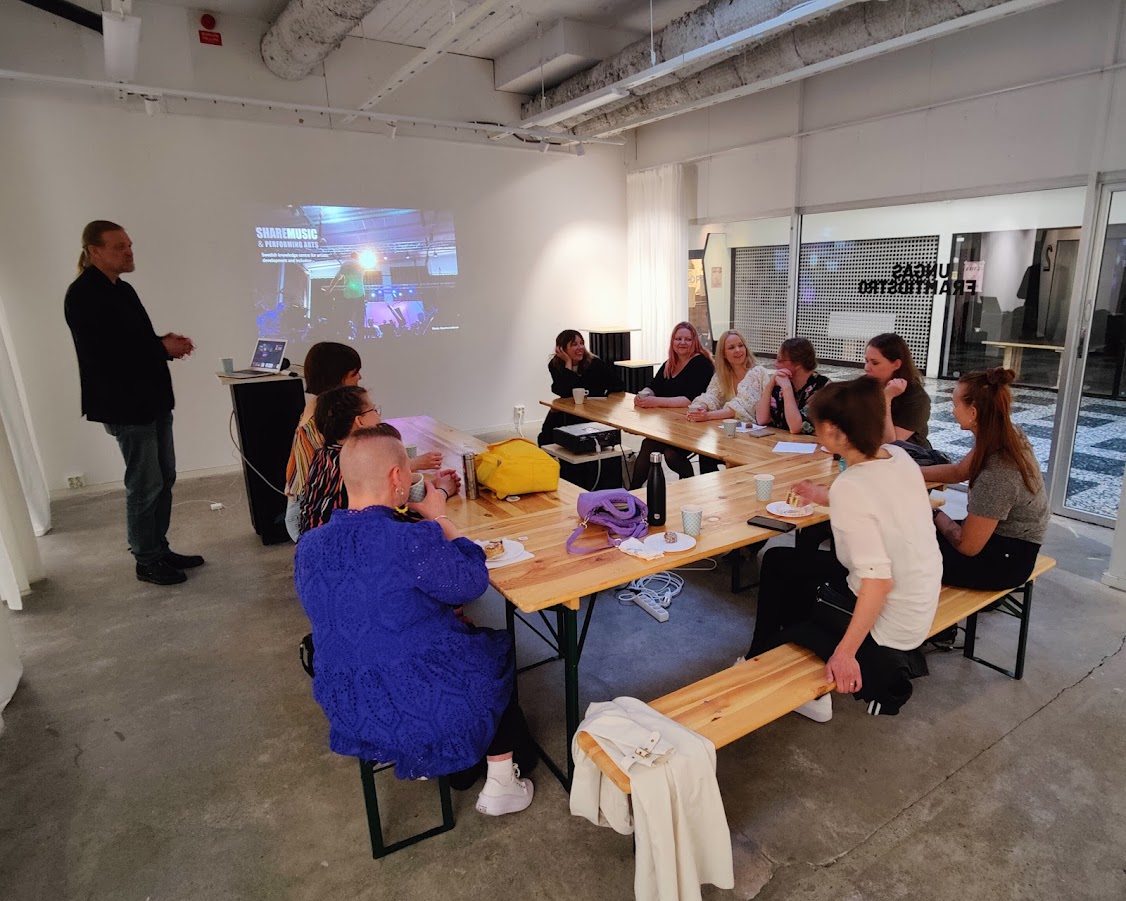
The second visit of the day was to Moomsteatern which is a professional theatre that employs actors with learning-disabilities. The executive director Sandra Johansson welcomed us and told us about the theatre’s history and activities. In the evening we got to see the show Under Fullmånen (under the full moon) at the theatre.
The last visit of the day was at Riksteatern Skåne. Riksteatern (the national theatre) is Swedens biggest touring theatre. Riksteatern has 219 local theatre associations all around Sweden and 21 regional associations that coordinate the local associations in the region. Riksteatern Skåne is one of them.
Riksteatern Skåne is distributing performing arts subsidies to schools and preschools, providing local theatre associations with organising support and developing the dance activities in the region. On our visit we heard about a dance project called kommunkorograf (community choreograph) or shorter KOKO. In the project they did different dance projects in the communities with different target groups. One of the projects was done together with older women where they got to tell their life story through dance.
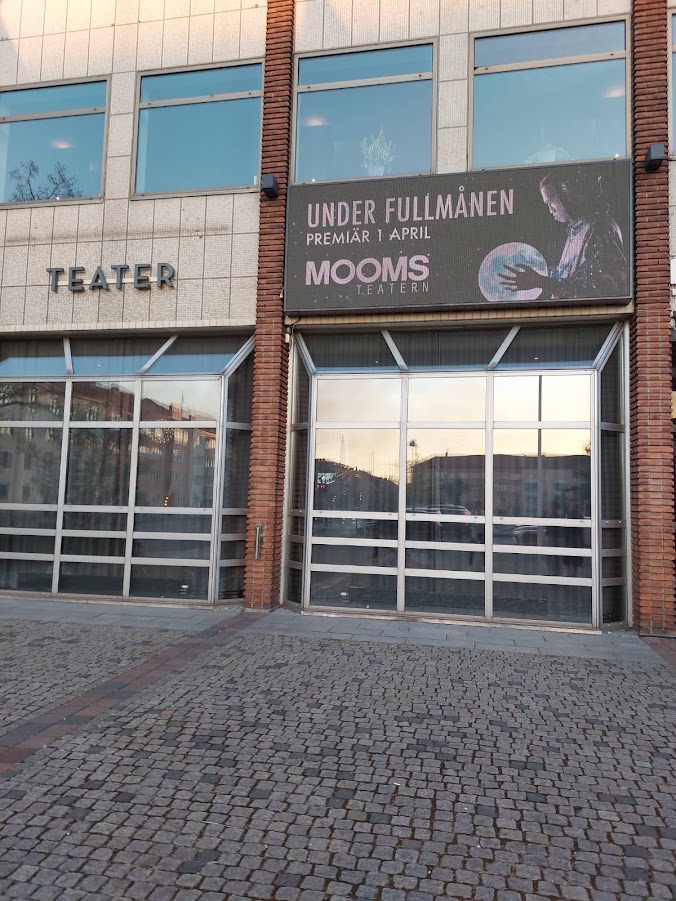
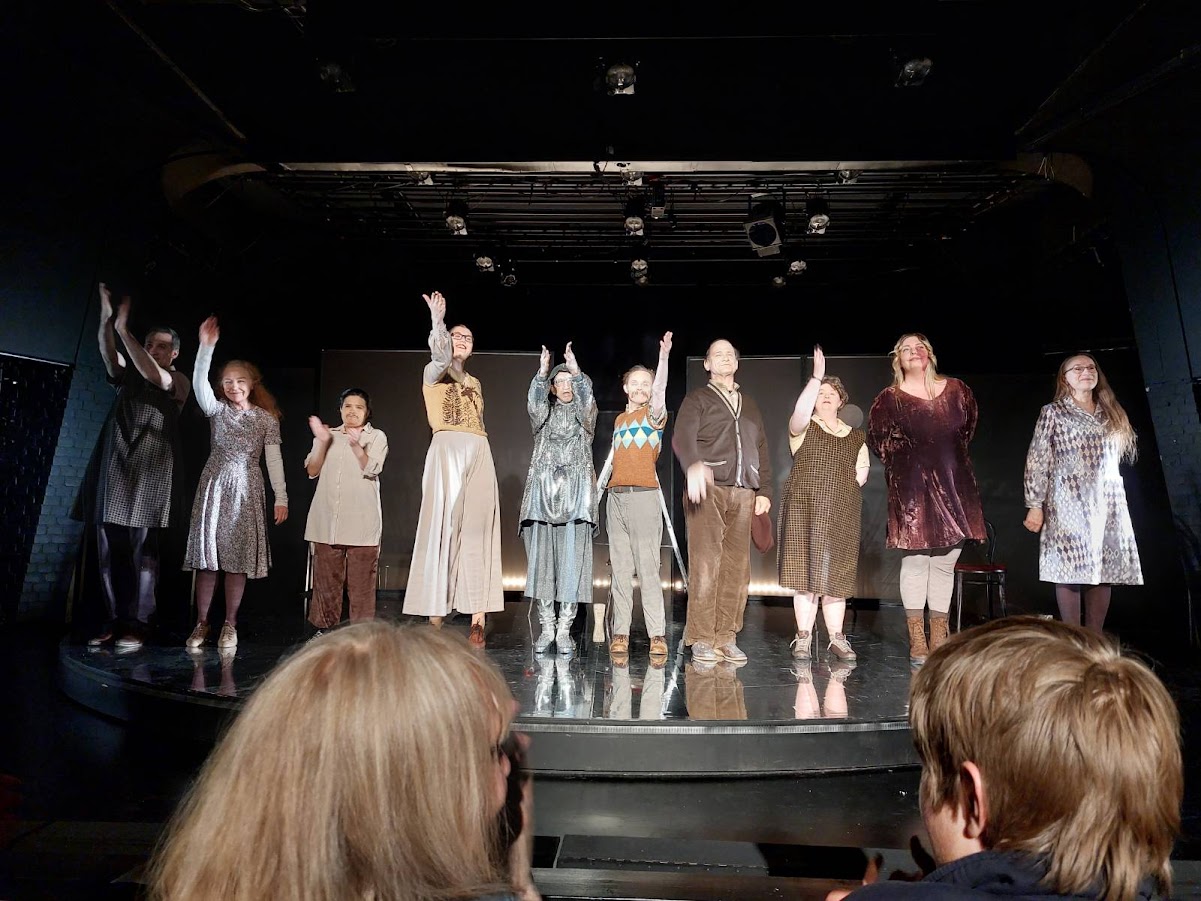
By: Jonna Kultanen
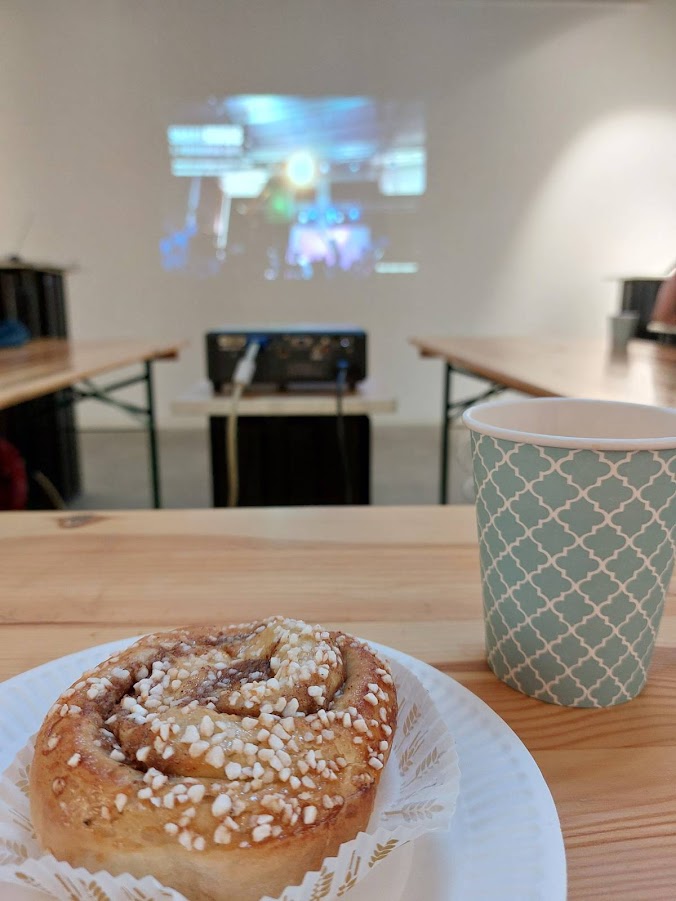
Task: What are your thoughts about creativity, collaboration, community work and outreach work?
Maj: Culture is a basic human right for all and it has been researched that it improves health and wellbeing in many different ways. That is why it is important that cultural institutions and organisations do outreach work, so that everybody gets a chance to take part in creative activities and enjoy culture and arts.
As I am working at a disability organisation it was very interesting to hear about the amazing work they do at ShareMusic and Moomsteatern. Both of the organisations promote professional artistic work for people with disabilities. ShareMusic was also exploring and developing new digital tools and ways to use tech in making music, which was very interesting and exciting.
Jonna: The second day was full of smiles and thought provoking ideas. I find multidisciplinary collaboration interesting and see it as an effective tool for health promotion. At ShareMusic we heard that their work was more about sharing than performing, and I thought that they had really captured the idea of a fruitful collaboration. I would say that reflecting and listening were valued but also seen in the outcomes in ShareMusic’s projects, especially considering the project with Elefantöra. Elefantöra (elephant ear) is an ensemble that experiments with digital music making tools.
The Moomsteatern was really the highlight of my trip, as their performance aroused so many feelings. But the conversation about accessibility, and how it in the end serves us all was very meaningful. The Riksteatern Skåne was another warm encounter. They encouraged finding the drive and then bravery going after it creatively. It really felt like everybody’s efforts were truly appreciated there.
Day Three – Museum
The third day it was time to take the Östersundståget to Copenhagen and visit the Medical Museion. It is a university museum that collects and exhibits medical science and health. The museum is a part of the Public Health Department in the University of Copenhagen’s Faculty of Health and Medical Science. The museum is based in the former Royal Danish Academy of Surgery that was built in 1787.
Our visit started with an introduction to the museum and its current exhibitions in the auditorium, which also was the place of lectures at the former Royal Academy of Surgery. The exhibitions currently taking place at the museum where The Body Collection, which exhibits DNA, foetuses and skeletons from the 18th century until today, Mind the Gut, an exhibition about the relationship between the mind and the gut, Corona will also be history one day, which told about the coronavirus and what we have learned from previous pandemics that was useful, Blindly, an exhibition about the communication means blind people have used through the centuries and a VR-experience of different eye disease, and a few others.
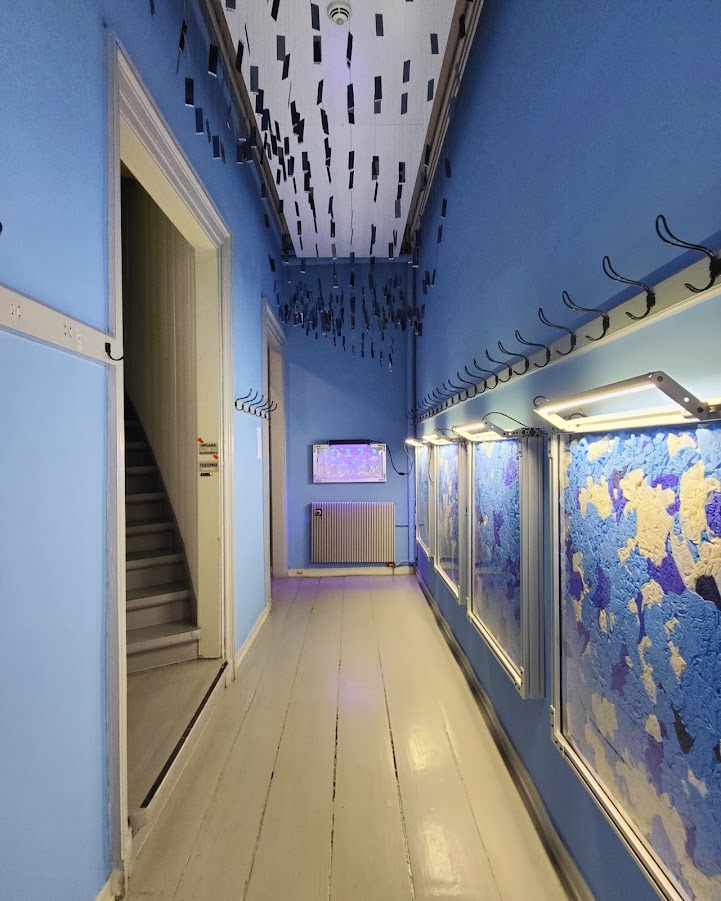
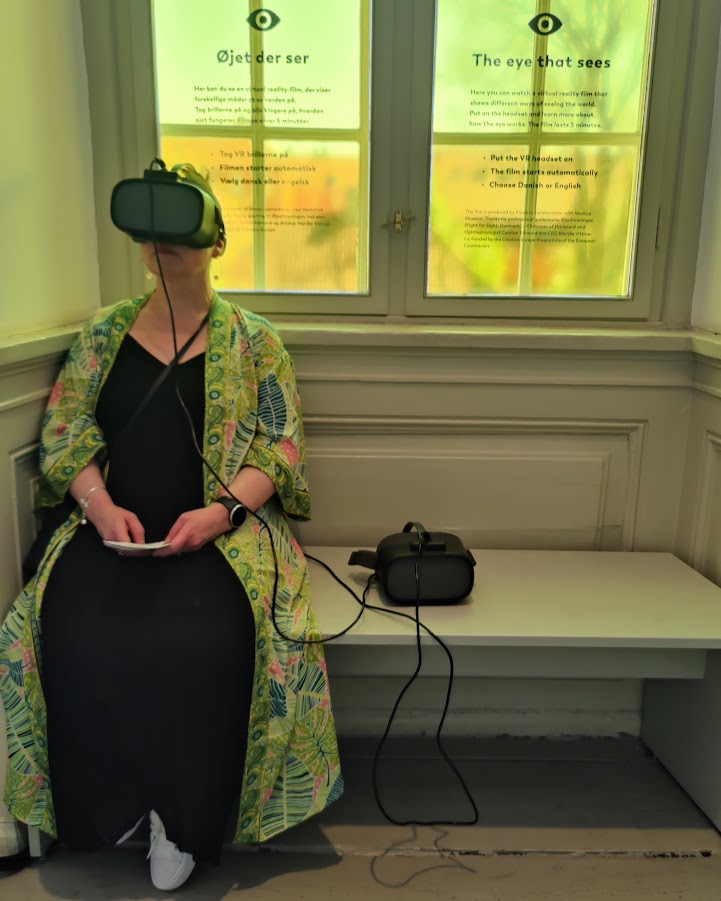
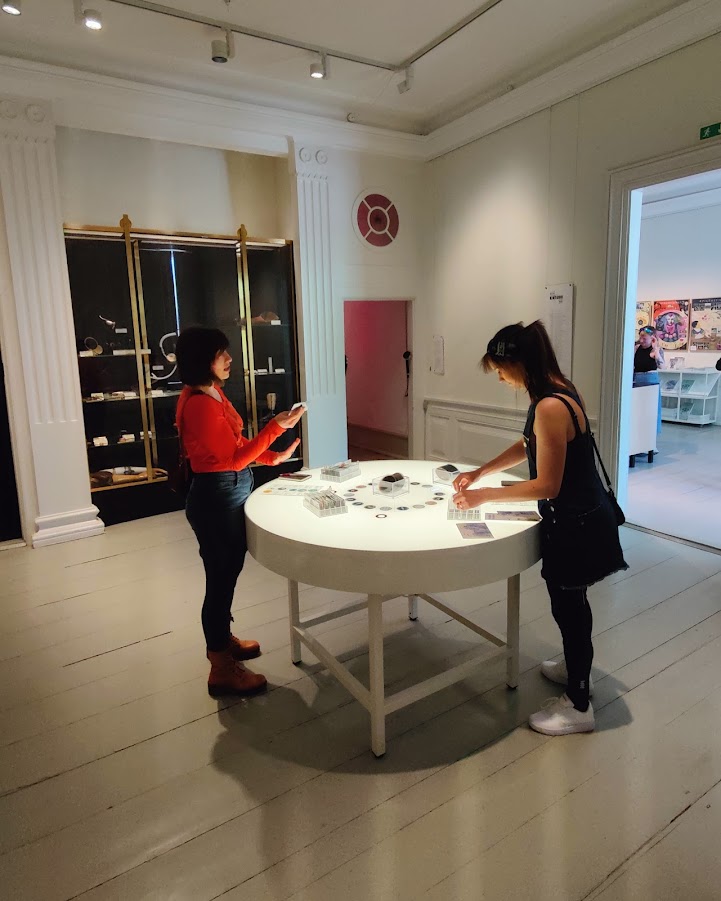
Task: Reflect of the museum experience.
Maj: During the visit at the museum we chose five words that described the museum experience and made a haiku out of those words. My five words were metabolism, braille, digestion, coronavirus, and ageing. Here is the haiku (in Finnish):
Metabolismi
Mieliydinelämä
Pistekorona
– Maj and Elina
My favourite exhibitions were the Corona and Blindly exhibitions. I liked the Corona exhibition because it was very interesting and reminded me that even things that we are experiencing today are history once in the future. It was a bit weird seeing an exhibition about something I have experienced. I liked the Blindly exhibition because I’m interested in different disabilities because of my work at the disability organisation and it was very interesting to try the VR-experience and see how different eye diseases affect the sight.
Jonna: The Medical Museion offered a lot to see and experience – so much that I ran out of time, and was not able to go through it all. Although the museum was very interesting, The Corona exhibition made me serious and the Body Collected exhibition made me sad. Health care field was never an obvious choice for my career and I finally ended up studying dental hygiene because of my desire to spread wellbeing. This museum made me think about myself as a little kid, telling my mother, who is a nurse, that I will never work in health care.
In the museum was a game about abilities, choices and conditions that have an effect on our life expectancy, that I found very interesting. The game was fun, engaging, and provided a wonderful way of learning. The game was placed next to the Kintsugi exhibition that showcased examples of body repair that have made it possible to extend our lives.
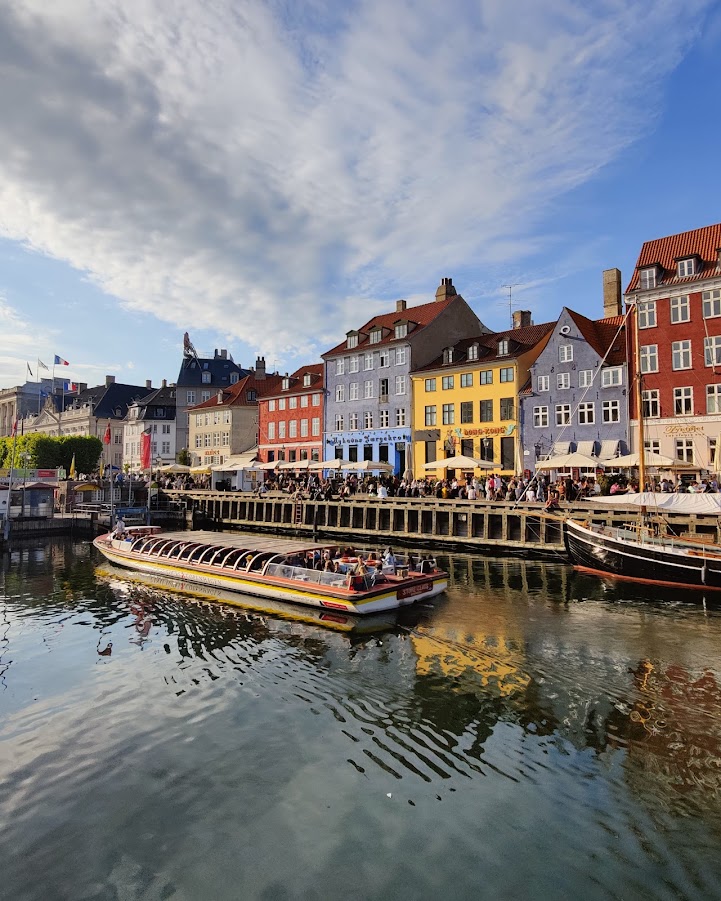
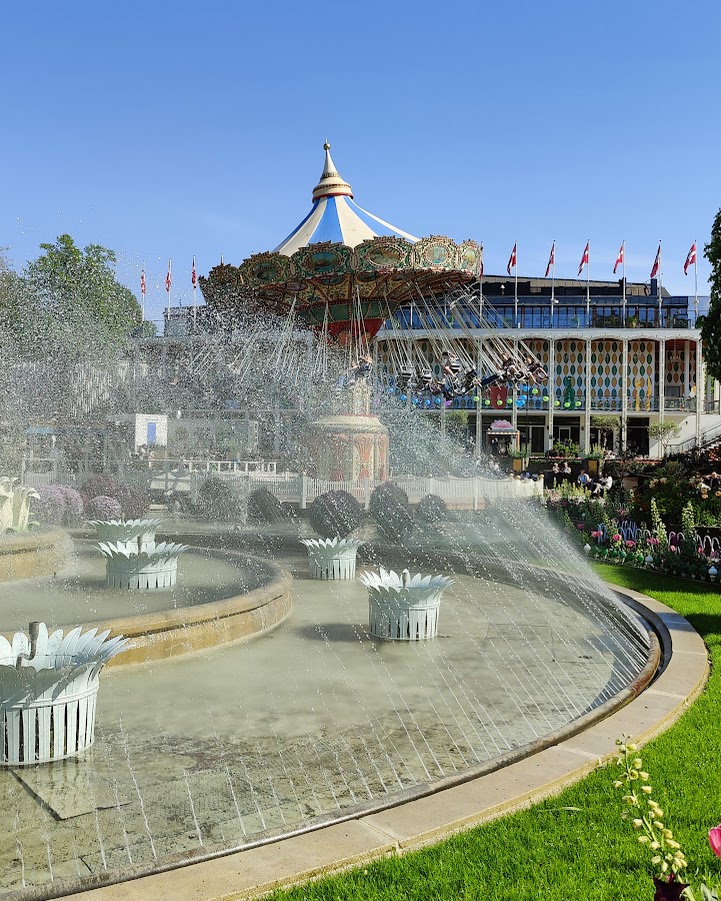
Final thoughts about about the study trip and outreach work:
Maj: As I have studied cultural management before, I have learned about cultural outreach work and I think it is a very important part of different cultural institutions and organisations. It was very interesting to visit different places in Sweden and Denmark and I learned a lot and got many new ideas. I also think it was valuable to spend time with fellow students and get to know them better, since we haven’t seen each other that much during our studies.
Jonna: The study trip brought great value in creating deeper understandings and connections within our community – both inside our group and between the visiting organisations. It was wonderful to see how freedom for creativity brings wellbeing among us all. Outreach work was a completely new concept for me, and I am still trying to wrap my head around it. I believe it might be about spreading wellbeing. After the study trip I have thought about it more and come to the conclusion that it has to be the thing that left me wondering after every visit during our study trip. The questions in my mind where: How did they make it possible to focus on the right things? Where does this freedom come from? Who makes this work possible? And in my ideal world everyone should be part of this.
References and useful links:
- Inter Arts Center, Lund University: https://www.iac.lu.se/
- ShareMusic & Performing Arts: https://www.sharemusic.se/
- Moomsteatern: https://moomsteatern.com/en/start/
- Riksteatern Skåne: https://www.riksteatern.se/forening/riksteatern-skane/
- Medical Museion:https://www.museion.ku.dk/en/forside/
- Rudolf Laban, Trinity Laban Conservatoire of Music & Dance: https://www.trinitylaban.ac.uk/about-us/history/rudolf-laban/
- Outreach work: https://en.wikipedia.org/wiki/Outreach
- Émile Jaques-Dalcroze: https://www.britannica.com/biography/Emile-Jaques-Dalcroze
